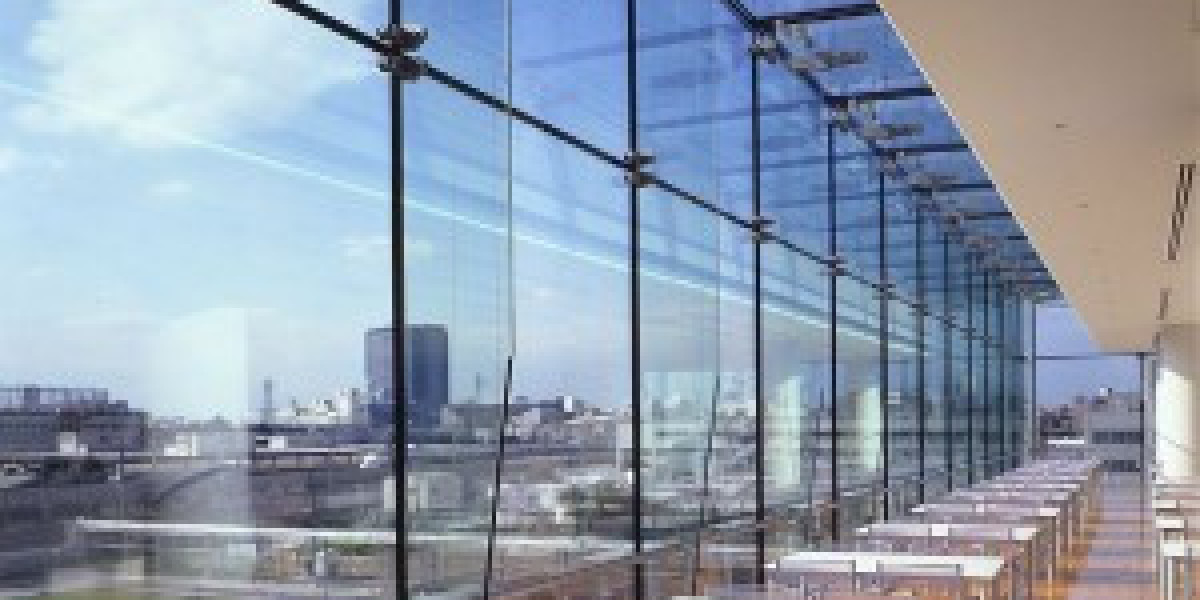What is a Matrix Curtain Wall?
A matrix curtain wall is a modern type of exterior wall design cladding high-rise buildings made from aluminum and glass. The matrix curtain wall differs from traditional curtain walls in that it uses a modular framework to connect and support the glass panels, allowing for a more flexible and expanded design.
History and Development
The first modern curtain walls began appearing in the 1950s as architects explored new technologies and materials that could maximize glass surfaces. Early curtain wall designs used numerous thin metal mullions to divide large sheets of glass that provided structure but limited design flexibility. In the 1970s, the evolution of metal extrusions allowed for the development of a modular matrix framework. This framework divides the wall surface into discrete panels that can be easily replaced or modified.
Matrix Curtain Wall quickly gained popularity throughout the 1970s and 80s as it streamlined construction processes and provided architects greater stylistic control. Major projects like Toronto’s First Canadian Place skyscraper, designed by John Andrews in 1975, helped popularize the new matrix wall system for tall buildings. Advancements in aluminum and insulating glass technologies further enhanced both the architectural possibilities and energy efficiency of matrix curtain walls. Today matrix curtain walls have become the dominant exterior wall system for mid-rise to high-rise construction globally.
Design Flexibility
One of the major advantages of matrix curtain walls is their modular design flexibility. The framework divides the exterior into individual panels that can be made from various materials including glass, metal panels, terra cotta, or stone. This allows panels to be individually customized in both size and material, providing architects expansive aesthetic control over facades. Complex geometries, unique patterning, double or triple-skin designs are all possible. Matrix curtain walls also permit late design changes since individual panels can be easily replaced or modified on-site.
Sustainability
With their expansive glass surfaces, early curtain walls faced criticism for poor thermal performance. However, matrix curtain walls have improved greatly in energy efficiency through advances like low-emissivity (low-E) glass coatings and sealed insulating glass units. Today's designs can achieve twice the insulating value of early curtain walls and meet stringent codes. Matrix curtain wall panel joints are also tightly sealed to prevent air and water infiltration. Many designs now incorporate features like integrated sunshades, photovoltaic panels or phase change materials to boost sustainability. Contemporary projects often target energy certification standards like LEED.
Installation Versatility
Due to their modular framework, matrix curtain walls provide contractors versatility in installation sequencing. Panels can often be pre-assembled off-site in a factory setting and then anchored into place. This speeds up the overall construction process compared to site-assembled unitized curtain walls. It also allows phased installation as floors are completed. Cranes or hoists lift panels into position where they are secured to floor slabs, columns or spandrel beams based on the structural design. The flexibility of the matrix system means walls can begin enclosure even as the building rises floor by floor.
New Materials and Technologies
As technology progresses, new materials are expanding the possibilities of matrix curtain walls. For example, aerogels, ultra-light translucent nanomaterials, are finding use in advanced triple-glazed insulated units. Other innovations include electroluminescent glass capable of changing color and transparency and switchable integrated photovoltaics. Self-cleaning photovoltaic glass treatments harvest energy while staying free of dirt and grime buildup. Matrix frameworks are also being 3D printed from aluminum or composite materials like reinforced nylon for customized complex geometries. These emerging technologies promise to further enhance sustainability, performance and aesthetics of next-generation matrix curtain wall designs.
Since its origins in the 1970s, the matrix curtain wall has revolutionized modern high-rise design. Its versatile modular framework has given architects unprecedented visual flexibility while improving construction efficiency. Advances in materials now allow matrix curtain walls to meet high standards of energy efficiency and sustainability. The system remains at the leading edge through integration of emerging technologies from advanced glazing to 3D printing. As one of the predominant wall systems for tall commercial and residential buildings today, the matrix curtain wall will likely continue transforming skylines for decades to come.
Resources – Innovative Technologies in Matrix Curtain Wall Design and Installation
What are the Key Developments in the Matrix Curtain Wall Market?
What is the Role of Matrix Curtain Walls in Sustainable Architecture?
Matrix Curtain Walls vs. Traditional Curtain Wall Systems: A Comparative Guide
Get This Report in Japanese Language:
Get This Report in Korean Language:
About Author:
Priya Pandey is a dynamic and passionate editor with over three years of expertise in content editing and proofreading. Holding a bachelor's degree in biotechnology, Priya has a knack for making the content engaging. Her diverse portfolio includes editing documents across different industries, including food and beverages, information and technology, healthcare, chemical and materials, etc. Priya's meticulous attention to detail and commitment to excellence make her an invaluable asset in the world of content creation and refinement. (LinkedIn- https://www.linkedin.com/in/priya-pandey-8417a8173/)









